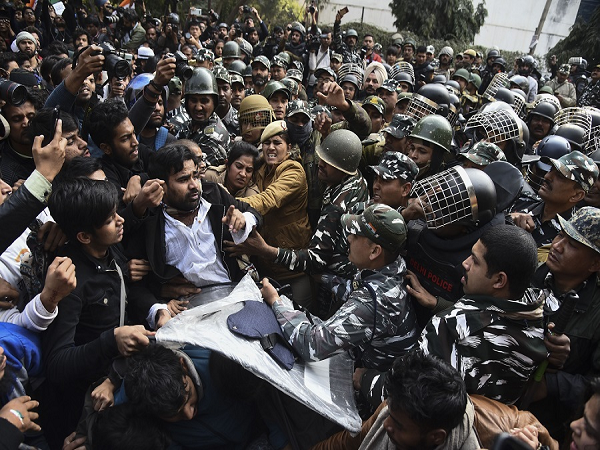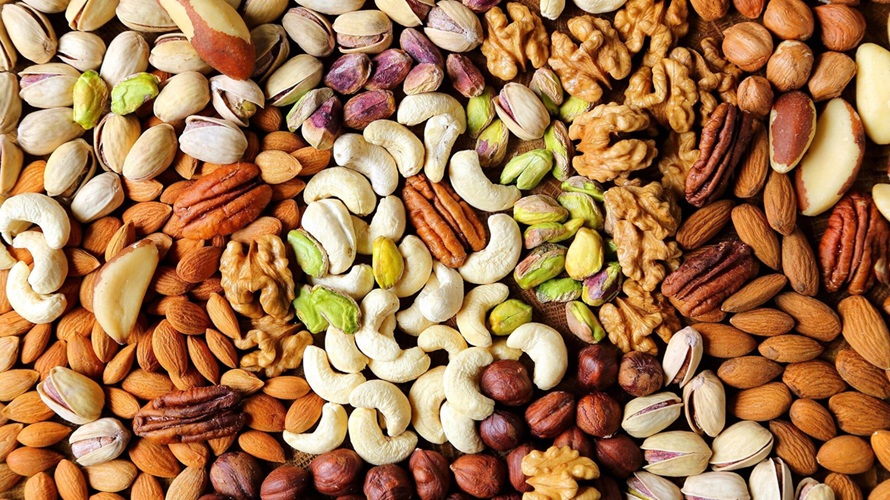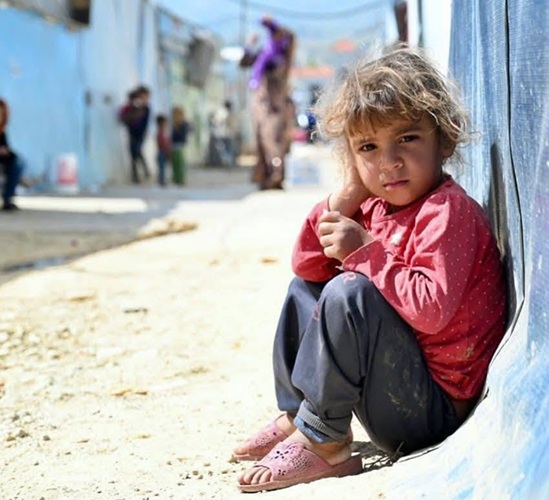Citizens Against Hate releases its fact-finding report based on 209 testimonies of students against whom brutal police force was used
NEW DELHI – One year ago, on December 15, 2019, large-scale protests against the Citizenship Amendment Act in the Jamia Millia Islamia (JMI) and the Aligarh Muslim University (AMU), two central universities with a significant number of Muslim students, were met with a brutal police crackdown.
The police in anti-riot gear had entered the campuses, baton-charged students and fired tear-gas shells into university buildings. Dozens of students were injured and many detained.
In separate investigations, the National Human Rights Commission found several incidents of excessive use of force by the police in both universities.
One year later, a report called ‘The Dismantling of Minority Education’ by rights group Citizens Against Hate (CAH) looks at the violence, the lack of accountability and the continuing harassment of students of JMI and AMU.
This report is the result of fact-finding investigations by CAH and is based on 209 testimonies of students from JMI and AMU.
The fact-finding members visited the two campuses, the hospitals where injured students were admitted and police stations where they were detained.
At least eight separate visits were conducted between December 14, 2019 and late February this year along with telephonic conversations with injured students. The report lays out the events as they unfolded, visible patterns of violence, and continuing criminalization of students.
It details the psychological impact on students, the oversights in NHRC investigations into JMI and AMU and the legal framework that needs to be brought to bear on the use of force.
The Findings:
Jamia Millia Islamia
- Delhi Police and the RAF officials entered the University without permission of the administration.
- The police and RAF officials made disproportionate use of force against students. Among other weaponries, pellets, rubber bullets and live ammunition were discharged against young, protesting students. Tear-gas shells and sound bombs were used indiscriminately, including in confined spaces.
- Police and RAF officials caused grievous injuries to students. One student was blinded owing to lathi-charge by the police, while several others suffered from fracture and head injuries.
- On December 15, 2019, women students were dragged and beaten by male police officers. On February 10, 2020, women students were attacked based on their religious identity and theirhijabs were pulled off. Several women students were sexually assaulted. They were beaten over their genitals and suffered vaginal injuries.
- Tear-gas shells were thrown inside the campus mosque. Police forces broke open the gates and entered inside. The Imam of the mosque, the security guard and a few students, who had locked themselves inside post-evening prayers, were also attacked.
- Tear-gas shells were thrown inside the old reading hall and Dr. Zakir Hussain library. Students’ devices like laptops and phones were broken. Many students also lost their research work as a result.
- Police damaged public and private property on campus, including CCTV cameras, destroying documentary evidence of abuse.
- Police used communal slurs and verbal abuses attacking the Muslim identity of the students. Those visibly bearing such identity markers, particularly Kashmiris, were targeted.
- The officers paraded the students with their hands up in the air. They were verbally assaulted and referred to as ‘terrorists’.
- There was delay in giving medical assistance to injured students, while, in other instances, medical access was prevented. Many students did not seek medical treatment due to fear of reprisal.
- Students who were taken in custody and the lawyers outside had to plead with the police officers before they were finally allowed to meet with a counsel. They were kept overnight without access to basic facilities.
- The harassment of students, including arrests and criminalisation, has continued beyond the events of December 15, 2019, and February 10, 2020.
Aligarh Muslim University
- On December 15, 2019, a peaceful march was held from Library Canteen to Bab-e-Syed at AMU. The police and RAF officers entered the campus and fired tear-gas shells, rubber bullets and stun grenades indiscriminately on protesting students, causing severe injuries.
- Police forces also entered and bombarded guest house No. 2 and No. 3 and the mosque with tear-gas shells, where students had taken shelter. Many students became unconscious upon inhaling it.
- Some shells blew up in the hands of students, while they attempted to throw them away in order to protect themselves.
- At Morrison Court Hostel, Room 46 caught fire after police forces broke open the gates and threw tear gas shells inside, asphyxiating three students. In a semi-conscious state, these students were dragged from the Hostel to Bab-e-Syed and beaten.
- The police and RAF vandalized students’ vehicles and university property.
- The police assaulted the ambulance drivers to prevent them from taking injured students to the hospital.
- Around 60 students suffered severe injuries and trauma and had to be rushed to the emergency ward of the JLNM Hospital of AMU. Many students did not seek medical attention due to fear of reprisal.
- Proper medical treatment was not given to the students. Three students were critically injured including the one who lost his hand, which was amputated.
- Several students were detained despite their injuries. At least three students were tortured in custody: stripped, beaten, deprived of food, water and access to medical aid, despite heavy bleedings and fractures, and debased over religious criteria.
- The harassment of students, including arrests and criminalisation, has continued beyond the events of December 15, 2019. On December 10, 2019, the Aligarh Police registered FIRs against 21 AMU students along with 500 unnamed persons, following a protest. On the night of December15, 2019, two separate FIRs were filed against 56 individuals and 1,200-1,300 unnamed persons.






0 Comments